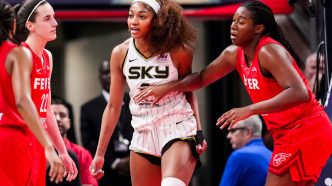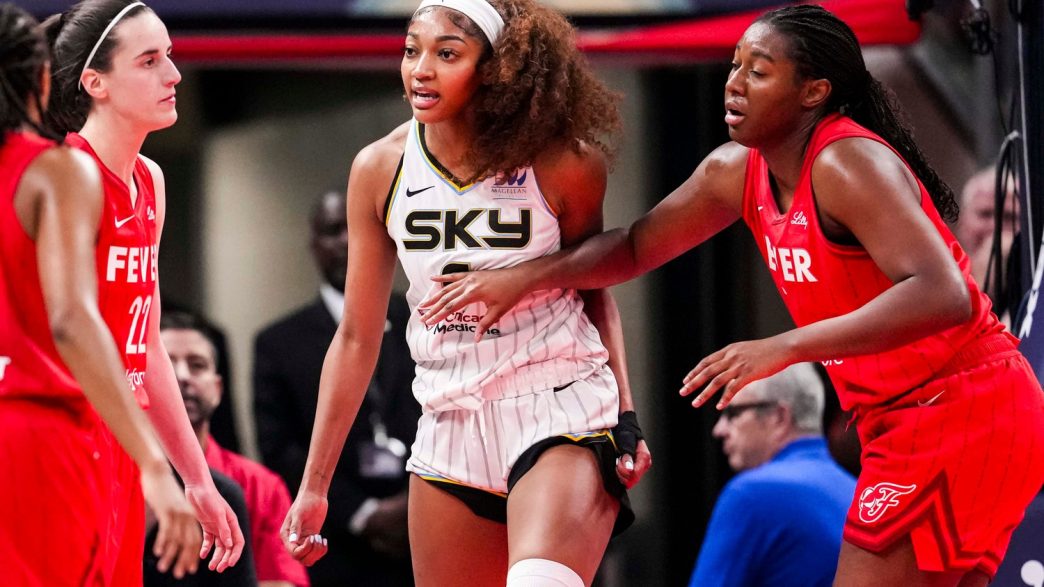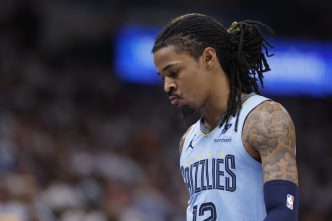In a provocative X post, former NFL quarterback Robert Griffin III (RGIII) dives headfirst into the simmering tension between WNBA stars Angel Reese and Caitlin Clark, framing their dynamic as a fiery rivalry steeped in competition, envy, and cultural complexity. RGIII’s post, which has sparked widespread discussion, doesn’t shy away from bold claims: he asserts that Reese “hates” Clark, driven by jealousy and resentment, and compares their dynamic to the iconic NBA rivalry between Isiah Thomas and Michael Jordan. Let’s unpack RGIII’s perspective, the context of this rivalry, and why it’s resonating with fans and critics alike.
The Core of RGIII’s Argument
RGIII’s post centers on what he sees as undeniable evidence of Reese’s animosity toward Clark. He points to specific behaviors: Reese’s refusal to engage with questions about Clark, her visible frustration when Clark is credited for the surge in women’s basketball popularity, and her celebration of aggressive plays against Clark, including a moment where Reese appeared to escalate a routine foul into a near-physical confrontation. RGIII interprets these actions as more than competitive fire—he calls them “hate, jealousy, and resentment.”
But RGIII doesn’t stop at surface-level accusations. He acknowledges the racial undertones that make this conversation delicate. Reese, a Black woman, operates in a cultural landscape where stereotypes about “angry” or “jealous” Black women can unfairly color perceptions. RGIII pushes back against reducing Reese to a stereotype, emphasizing her credentials as an NCAA champion and a fierce competitor. Yet, he argues, her frustration stems from a disparity in how the public and media celebrate Clark’s confidence while critiquing Reese’s similar bravado. This, RGIII claims, fuels a personal rivalry that’s as much about pride as it is about basketball.
The Reese-Clark Rivalry: Context and Flashpoints
To understand RGIII’s post, we need to look at the moments that have defined the Reese-Clark dynamic. Both players rose to prominence in college basketball, with Reese leading LSU to a 2023 NCAA championship victory over Clark’s Iowa. That game was a cultural milestone, drawing massive viewership and spotlighting both stars. However, it also set the stage for tension. Reese’s celebratory gestures toward Clark during the game—mimicking Clark’s own “you can’t see me” taunt—drew polarized reactions. Some saw it as spirited competition; others viewed it as unsportsmanlike.
Since entering the WNBA, the rivalry has only intensified. Clark, drafted by the Indiana Fever, has been hailed as a transformative figure, credited with boosting the league’s visibility through her sharpshooting and marketability. Reese, now with the Chicago Sky, has carved out her own niche as a rebounding powerhouse and unapologetic personality. Yet, as RGIII notes, Clark’s coronation as the face of women’s basketball often overshadows Reese’s contributions, creating a narrative where Reese is cast as the antagonist.
RGIII highlights specific incidents that amplify this tension. For instance, he references Reese’s reaction to a flagrant foul by a teammate on Clark, interpreting her celebration as a sign of personal animus. He also points to an altercation following a routine foul, where Reese’s response seemed disproportionate, suggesting deeper frustration. These moments, RGIII argues, aren’t just about on-court competition—they’re about Reese’s desire to “beat and outshine” Clark, who remains the sport’s golden child.
The Cultural and Historical Lens
RGIII’s post is notable for addressing the racial dynamics at play. He recognizes that calling out Reese’s “hate” or “jealousy” risks invoking harmful stereotypes about Black women, a group historically misrepresented as overly aggressive or envious. By acknowledging this, RGIII attempts to thread a needle: he critiques Reese’s actions while affirming her talent and competitive spirit. His comparison of Reese to Isiah Thomas—a polarizing figure who clashed with the universally adored Michael Jordan—further contextualizes the rivalry as one where personal pride and public perception collide.
This racial subtext isn’t just academic. Fans and commentators have noted how Clark, a white player, benefits from a media narrative that often elevates her as a “safe” or “marketable” star, while Reese’s boldness is scrutinized. Reese herself has leaned into the “villain” role, embracing the criticism as part of her identity. As RGIII points out, this dynamic—where Reese feels overshadowed despite her accomplishments—fuels the rivalry’s intensity.
Why This Rivalry Matters
RGIII’s post isn’t just gossip; it’s a commentary on what makes sports compelling. “Rivalries aren’t built on handshakes,” he writes. “They are forged in fire, fouls, and pride.” The Reese-Clark feud, with its mix of athletic excellence, personal stakes, and cultural weight, has the potential to elevate the WNBA’s profile. Just as Magic Johnson and Larry Bird or Jordan and Thomas drew eyes to the NBA, Reese and Clark could drive viewership and engagement in women’s basketball.
Data backs this up. The 2023 NCAA final between LSU and Iowa drew nearly 10 million viewers, one of the most-watched women’s basketball games ever. WNBA games featuring Clark and Reese continue to attract strong audiences, with their matchups generating buzz on social media and sports talk shows. RGIII’s comparison to Thomas and Jordan isn’t hyperbole—rivalries sell, and this one is authentic.
Criticism and Pushback
Not everyone agrees with RGIII’s take. Some fans and analysts argue he’s projecting emotions onto Reese, turning competitive intensity into something more personal. On X, users have debated whether Reese’s actions reflect “hate” or simply the natural friction of elite competition. Others caution against framing Reese as the villain, noting that doing so risks reinforcing the very stereotypes RGIII acknowledges. Clark, too, has faced scrutiny for her on-court demeanor, yet the narrative around her remains largely positive—a disparity that critics say RGIII underplays.
The Bigger Picture
RGIII’s X post is more than a hot take; it’s a snapshot of a cultural moment. The Reese-Clark rivalry encapsulates the growing pains of women’s basketball as it navigates newfound popularity, media scrutiny, and complex social dynamics. By calling out what he sees as Reese’s “hate” and framing it within a broader competitive and cultural context, RGIII has sparked a conversation that goes beyond the court.
As the WNBA continues to grow, the Reese-Clark saga will likely remain a lightning rod. Whether it’s rooted in jealousy, pride, or pure competition, this rivalry is undeniably compelling. As RGIII puts it, “That’s the game.” And for fans, it’s one worth watching.








